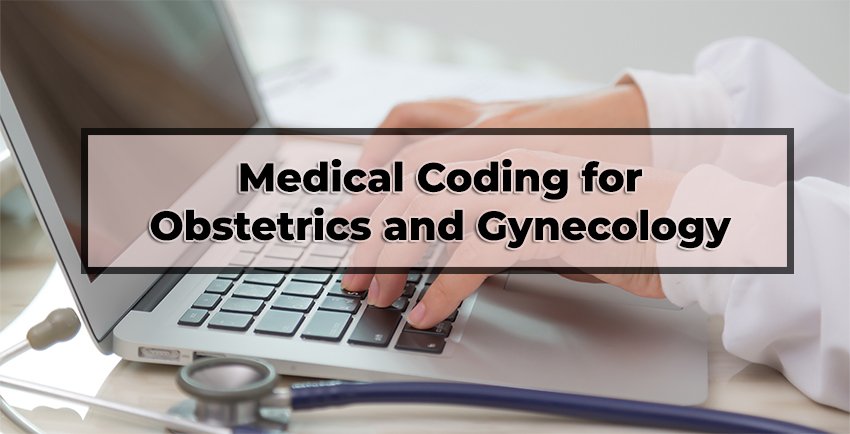Medical Coding for Obstetrics and Gynecology
Medical coding for obstetrics and gynecology (OB/GYN) focuses on accurately documenting and billing for services related to women’s reproductive health, pregnancy, childbirth, and postpartum care. Coding for OB/GYN involves a wide variety of services, from routine gynecological exams to complex surgical procedures and comprehensive pregnancy management. The proper coding of these services is essential for ensuring correct reimbursement and maintaining comprehensive patient health records.

OB/GYN coding requires familiarity with a range of codes, including CPT (Current Procedural Terminology) for procedures, ICD-10-CM for diagnoses, and HCPCS (Healthcare Common Procedure Coding System) for additional services and supplies. The complexity of OB/GYN coding arises from the diverse nature of the services provided, which may include preventive care, diagnostic procedures, surgical interventions, and delivery services.
Core Areas of OB/GYN Coding
- Gynecological Services and Preventive Care: Gynecological coding covers a range of services, including annual wellness exams, Pap smears, breast exams, and family planning counseling. These preventive services often have specific CPT codes that reflect the type of examination and any additional screenings performed. Accurate coding for gynecological care is essential for documenting a woman’s reproductive health and ensuring compliance with payer policies for routine preventive care.
- Obstetric Care and Pregnancy Management: Obstetric coding covers the entire span of pregnancy, from prenatal visits and testing to labor, delivery, and postpartum care. Coders must be adept at documenting the different stages of pregnancy and the types of care provided, using codes that distinguish between routine prenatal visits, complications of pregnancy, and different types of delivery (e.g., vaginal, cesarean section). The coding must reflect whether the care is part of global maternity care (which bundles all related services) or individual services provided outside the global period.
- Surgical Procedures and Interventions: Coding for OB/GYN also includes surgical procedures, such as hysterectomies, laparoscopic interventions, and tubal ligations. Each surgical procedure has a specific CPT code that reflects the type of surgery, the approach used (e.g., laparoscopic, open), and any additional techniques employed. Accurate surgical coding ensures that all aspects of the procedure are captured and appropriately reimbursed.
- Maternal and Fetal Complications: When coding for OB/GYN, it is important to document any complications that arise during pregnancy, childbirth, or the postpartum period. These may include gestational diabetes, preeclampsia, or fetal distress. Such complications require specific ICD-10-CM codes to accurately reflect the patient's condition and the level of care required.
Importance of Coding Guidelines in OB/GYN
OB/GYN coding is influenced by multiple guidelines and payer policies, making it crucial for coders to stay current on updates and best practices. Some key aspects include:
- Global Maternity Care Coding: Global maternity care typically includes all services related to a pregnancy, from prenatal care through delivery and postpartum visits. This "bundling" simplifies billing but requires coders to understand which services are included (e.g., routine prenatal visits, uncomplicated delivery) and which may be billed separately (e.g., high-risk consultations, additional diagnostic testing).
- Screening and Diagnostic Services: Coders must distinguish between preventive screening services, like routine Pap smears, and diagnostic services performed to investigate an existing condition. Correctly differentiating these services ensures compliance with payer guidelines and appropriate reimbursement.
Navigating Modifiers in OB/GYN Coding: Modifiers are frequently used in OB/GYN coding to indicate special circumstances. For instance, modifier -22 may be used for extended or more complex services, while modifier -59 can indicate that a procedure is distinct and separate from others performed on the same day. Proper use of modifiers helps ensure that claims are processed correctly and that services are accurately represented.
Documentation and Challenges in OB/GYN Coding
Proper documentation is key to accurate OB/GYN coding. Coders rely on detailed physician notes, lab reports, imaging results, and surgical descriptions to assign the correct codes. Given the broad scope of OB/GYN services, documentation must be thorough and specific to capture the full range of care provided, from routine screenings to specialized procedures.
Challenges in OB/GYN Coding: Coding for OB/GYN services can be challenging due to the need to document a wide variety of services, each with its own set of coding rules. Coders must also stay current on guidelines for global maternity care, surgical procedures, and screenings. Furthermore, the complexity of documenting complications during pregnancy, labor, and postpartum care requires careful attention to detail to ensure accurate coding and compliance.
Medical coding for obstetrics and gynecology is a complex and multifaceted area that requires a deep understanding of coding systems, guidelines, and payer policies. From routine gynecological exams to the comprehensive management of pregnancy and childbirth, accurate coding is essential for proper billing, compliance, and high-quality patient care. By understanding the nuances of OB/GYN coding, including the use of CPT, ICD-10-CM, and HCPCS codes, coders play a vital role in supporting the financial health of OB/GYN practices and facilitating comprehensive women's healthcare.

